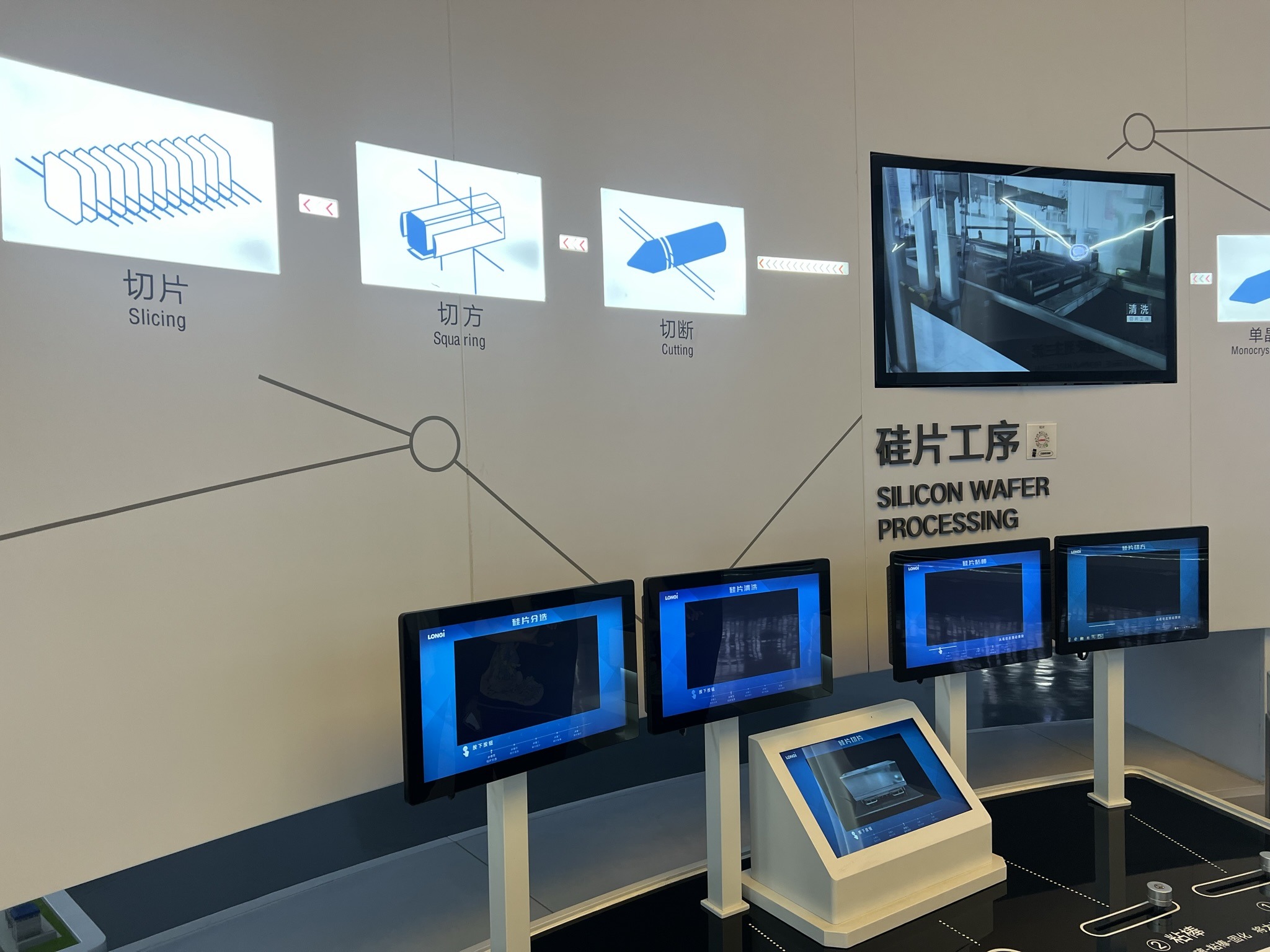China opened up for business travel in March, and the ETC wasted no time in getting back on the ground for another impactful trip east, this time to China, following a trip to Asia and Australia earlier this year. Adair Turner (ETC, Chair) and Philip Lake (ETC, Global Programmes Lead) spent just over one week in China, splitting time between Xi’An, Beijing and Shanghai with another packed agenda. Priorities for the trip included connecting with ETC members: Longi, The Institute for Climate Change and Sustainable Development at Tsinghua University (ICCSD), Centre for International Knowledge on Development at the Development Research Centre of the State Council, and RMI Beijing alongside friends of the ETC: CICC (China International Capital Corporation), Energy Foundation China, People’s Bank of China and engaging in new forums such as the GF60 (Green Finance Forum of 60) – a new forum for leading Chinese financiers.
Xi’An – Visiting ETC member, Longi, the world’s leading solar PV manufacturer
One of the main drivers behind the visit to China was to spend time with Longi at their headquarters in Xi’An to better understand the latest developments in solar PV technology. As the world’s largest wafer manufacturer (producing 85.06 GW in 2022), Longi is leading the solar revolution and has pioneered innovative and world-leading manufacturing capabilities since the company’s formation in 2000. The ETC were delighted to delve into each stage of the monocrystalline cell production process and the technology behind it.
Wafer production starts with the ingot pulling process (as seen in the picture below) followed by diamond wire cutting to create wafers. The Czochralski method for creating silicon ingots has been a major area of innovation with Longi developing the Rechargeable Czochralski method, enabling multiple ingot pulls from a single crucible, utilisation has increased from one ingot per crucible to nine today. The cost of monocrystalline wafer slicing has also fallen more than 80% since 2011, in part due to Longi’s R&D.
Visiting the 4GW cell factory on the outskirts of Xi’An the ETC were able to view the 8 steps of cell manufacture first hand and we were struck by the degree of automation in the factory. The level of automation can be seen in the image below where wafers are automatically moved from station to station. The PERC (Passivated Emitter and Rear Contact) cell technology is now one of the leading cell technologies due to its ability to produce more energy using an extra layer in the cell which allows some of the sun’s rays to be reflected back into the solar cell, giving a second opportunity for electricity generation.
Adair and Philip were also shown Longi’s latest innovations in BIPV (Building Integrated Photo Voltaic) – the latest monocrystalline modules can be produced in an array of different colours with minimal loss in conversion efficiency and offer a flexible choice for building exteriors, opening up architectural opportunities for the built environment.
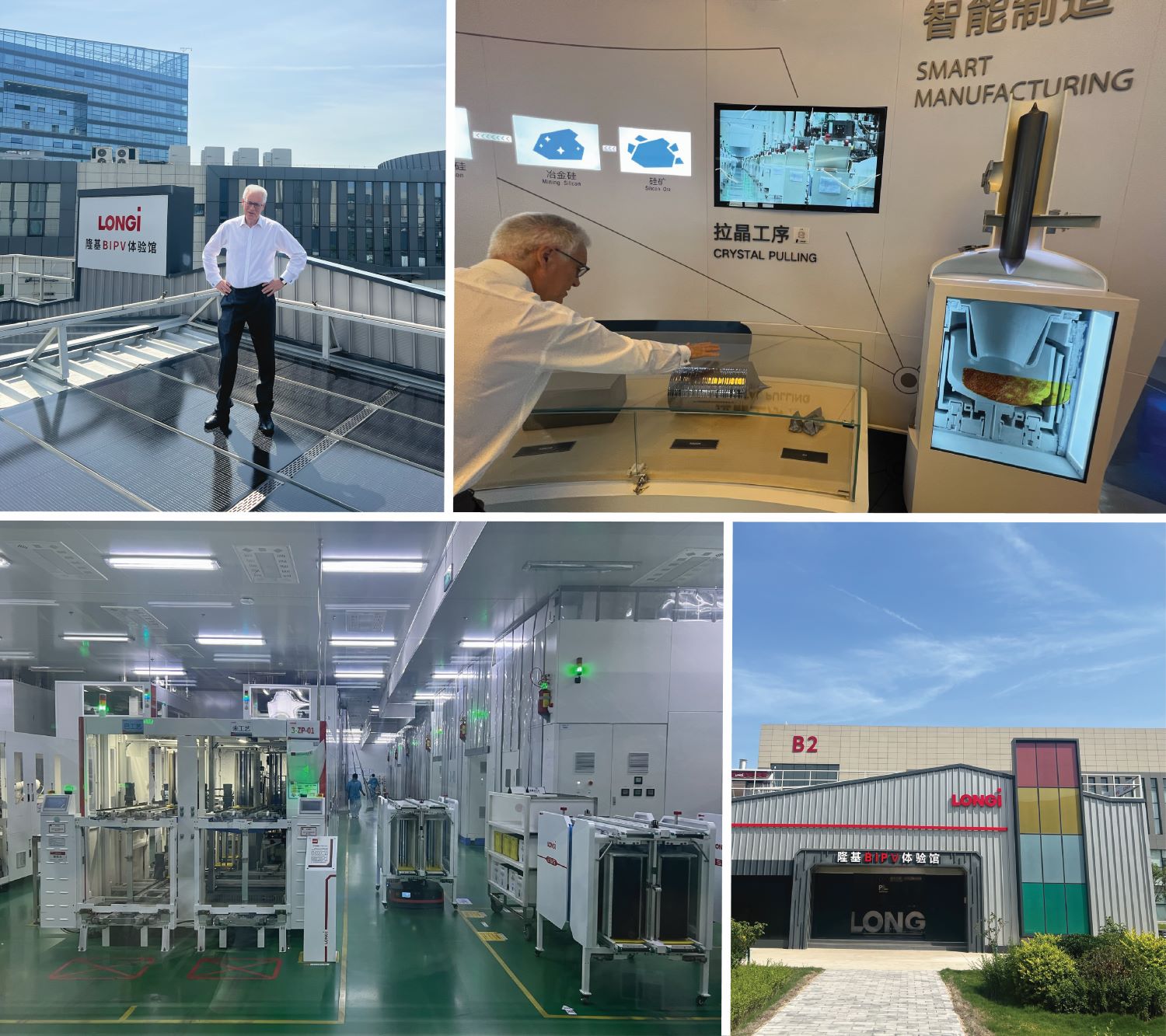
Beijing – Discussions about electric vehicles and renewables scale-up
After a very successful day with Longi, the focus moved to Beijing and a packed 2-day agenda awaited. The first port of call was a breakfast engagement with Dame Caroline Wilson, British Ambassador to China, and her team where UK-China relations were discussed and how experience from the UK and European power system operators could be shared with Chinese counterparts.
In an enlightening engagement with Sinopec, China Petroleum & Chemical Corporation, the pace of the transition to electric vehicles was really laid bare. Sinopec anticipate a future with next no internal combustion engine sales by 2029 and a near complete reduction on petrol and diesel sales at the pump by 2050. It is abundantly evident that the electric mobility revolution is advancing at pace and China is leading the way. The county has the largest EV market (Sales of EVs increased 82% in 2022 from 2021 and accounted for 57% of global EV sales last year) and the most electric vehicle chargers. However, with so much of the urban population living in high-rise towers, the rollout of public chargers will be more critical than in other regions where off-street parking is prevalent.
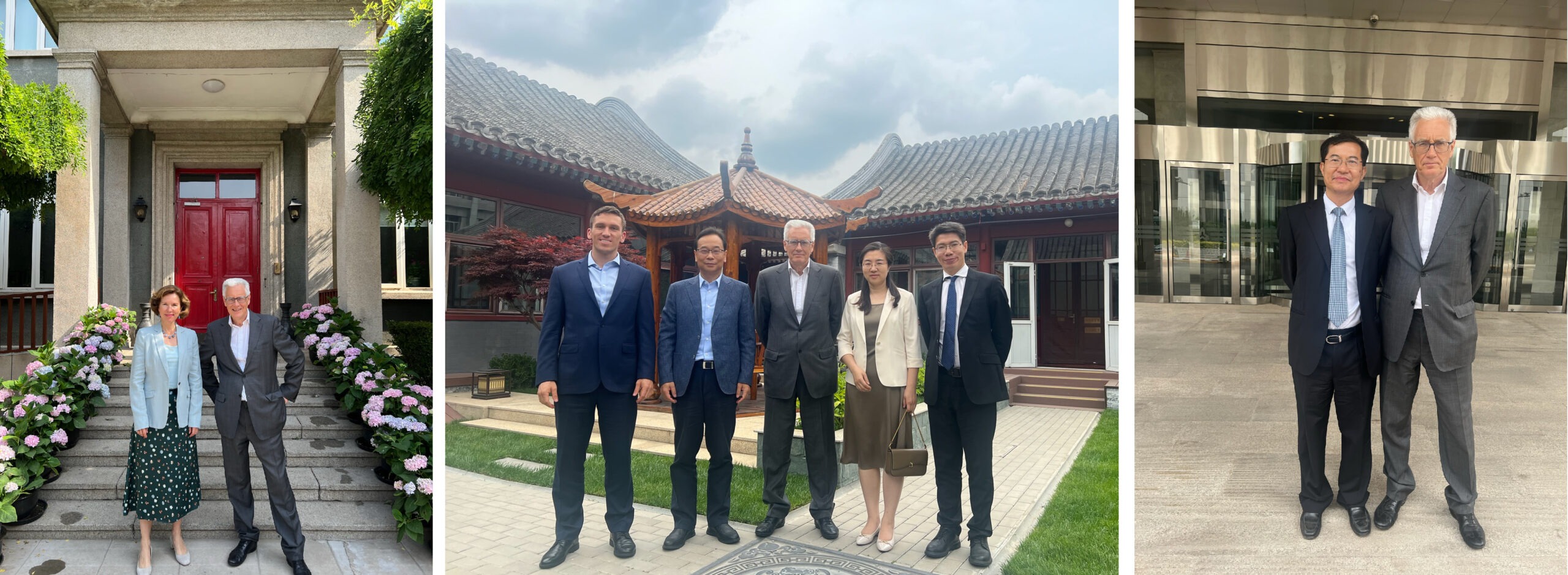
The emissions situation was front and centre in conversations with long-time ETC collaborators RMI Beijing, ETC member CIKD (Center for International Knowledge on Development), and close friends Energy Foundation China. The power demand in China is surging and the race is on for renewable capacity additions to meet all of the annual power demand increases. Despite clean energy satisfying ¾ of new power demand in 2022 (thermal generation accounted for 70TWh of the 300TWh increase), China approved 87GW of coal projects in 2022, up from 19GW in 2021. This surge comes as a response to energy security concerns heightened due to recent heatwaves which have caused a 15% decline in hydropower along with peaking power consumption from increased use of air conditioners. The power demand is increasing at 5.5-6%, much higher than the 4% modelled in the ETC’s report – China 2050: A fully developed rich zero-carbon economy – indicating we may expect a 2050 power system size reaching the 15,000TWh projected.
Renewables deployment and solar PV capacity additions, in particular, are scaling phenomenally in China. Around 90 GW of solar and 35 GW of wind were added in 2022. 160 GW of wind and solar is targeted for 2023 and already in Q1 of 2023 nearly 50GW of solar has been deployed, indicating this target is set to be exceeded. This rapid increase leads some to believe that 2023 could be the year in which non-fossils will contribute over 100% of the incremental power supplied to beat demand growth. This will of course have significant implications on the utilisation of the growing coal capacity.
It was a pleasure to be able to connect with Dr Changwen Zhao and his team at the Centre for International Knowledge on Development (CIKD) in Beijing, meet with Dr Peng Wensheng and Chen Ji from the CICC and Professor Li Zheng at the ICCSD at Tshinghua University. The last time Adair was on the ground in China was in 2019 before the COVID-19 lockdowns. So this visit was an opportunity to share international perspectives and the depth of work that progressed over the last 4 years at the ETC. Adair was invited to deliver a guest lecture to the CICC and present the 2023 Climate Change Global Lecture organised by the Institute of Climate Change and Sustainable Development (ICCSD) at Tsinghua University. A great honour for Adair and the ETC.
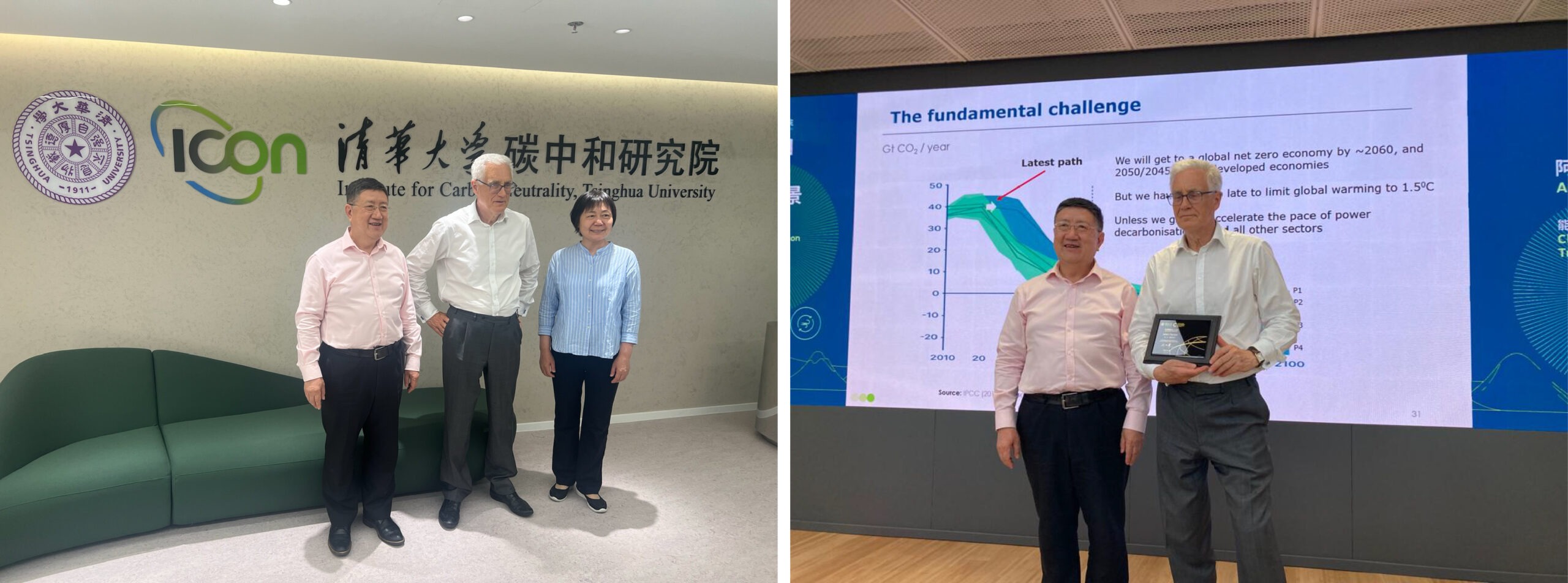
Shanghai – A focus on the finance needed for the energy transition and decarbonising steel
The trip came to a close in Shanghai where the ETC was welcomed by the GF60, the newly established Green Finance Forum of 60, an international platform on green finance, operated by Shanghai Jinsinan Institute of Finance. In Shanghai, the visit shifted towards a finance focus where the ETC was able to disseminate key messages from our recent report on Financing the Transition at a closed seminar of 80+ leaders from Chinese banks, insurers and investment managers.
Alongside sharing the ETC projections for finance in the global energy transition and the importance of investment in the power system (of $3.5 trn per annum needed to build a net-zero economy, 70% will be needed in power generation, networks, storage and flexibility), the focus was on private finance sector commitments and tools, including emissions disclosure, green bonds/indices, financed emissions and transition investment ratios.

The ETC spent time with the Shanghai Environment and Energy Exchange discussing the effectiveness of China’s emissions trading scheme which began operation in 2021, and which regulates more than 2000 companies from the power sector. With free allowances and no defined reduction of an emissions cap, the carbon price remains low and is not significantly influencing corporate investment decisions. However, sharing lessons from the experience in Europe where the EU Emissions Trading Scheme has recently been tightened and other markets can help steer China’s market to greater effectiveness. Over the coming years, other sectors are to be added to the market and in pilot markets removal of free allocations is being trialled.
The last meeting of the trip was a highly anticipated opportunity to meet with senior leadership of Baowu, the world’s largest steel producer. It’s clear from this highly valuable engagement that decarbonisation efforts are well underway and a number of pilot projects are in operation. Baowu’s HyCROF technology is currently leading decarbonisation efforts in a 430 m3 blast furnace pilot project. This is to be expanded to a larger blast furnace by the end of 2023. The ETC and MPP teams will seek to further engage with Baowu on the technological developments but also on issues such as alignment on low carbon standards for green steel.
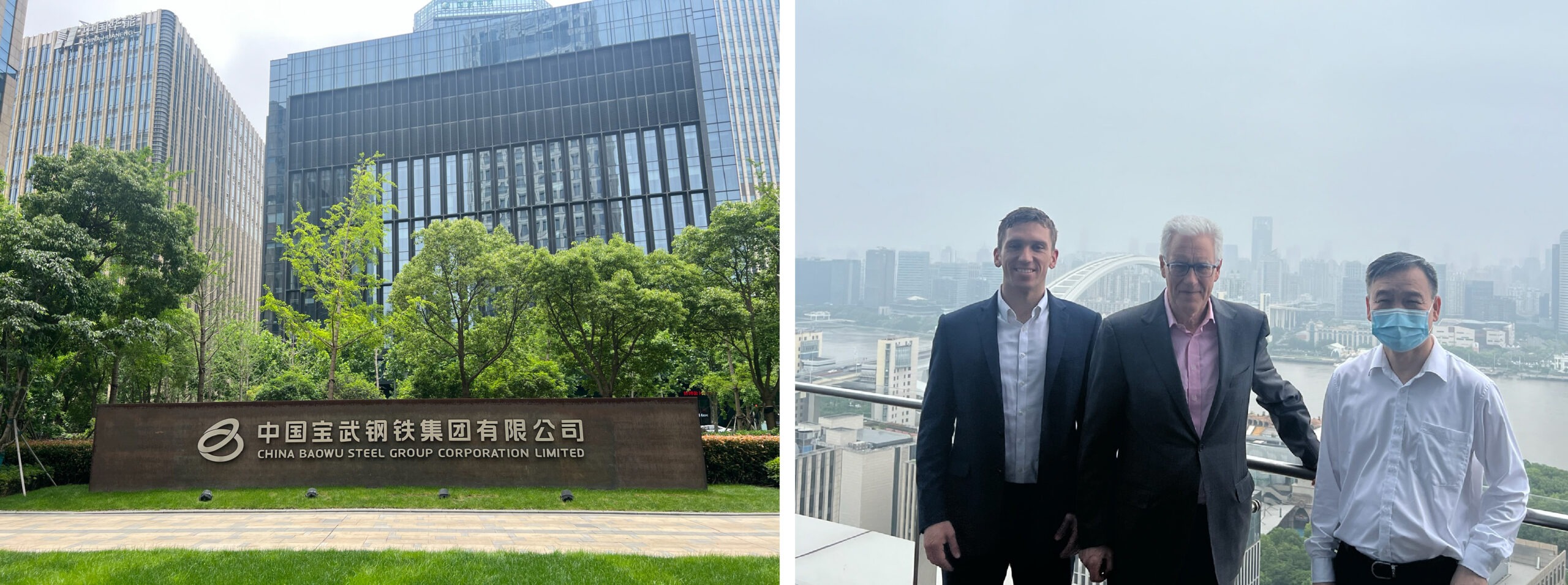 Overall the ETC walked away a plethora of rich insights across the power sector, mobility, heavy industry and green finance, which only serves to enhance our global analysis. China is surging on renewables deployment and with the 2023 target of 160 GW of wind and solar looking like it is to be exceeded, power system emissions peaking in China is potentially around the corner in the next few years. With energy security concerns at a high, and a huge coal pipeline the emphasis must remain on the phase down, and phase out of coal without risking system reliability. Capacity payments and investment in transmission grids will be critical enablers.
Overall the ETC walked away a plethora of rich insights across the power sector, mobility, heavy industry and green finance, which only serves to enhance our global analysis. China is surging on renewables deployment and with the 2023 target of 160 GW of wind and solar looking like it is to be exceeded, power system emissions peaking in China is potentially around the corner in the next few years. With energy security concerns at a high, and a huge coal pipeline the emphasis must remain on the phase down, and phase out of coal without risking system reliability. Capacity payments and investment in transmission grids will be critical enablers.
The ETC would like to thank all our members in China for their support to deliver an impactful agenda, to new friends of the ETC who we look forward to collaborating in the near future, and for the opportunity to showcase to local audiences the latest ETC insights at the CICC, ICCSD and GF60.


